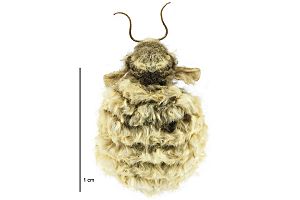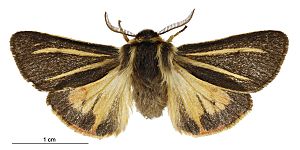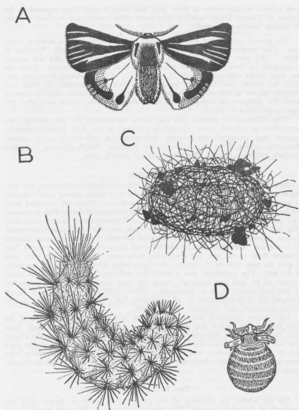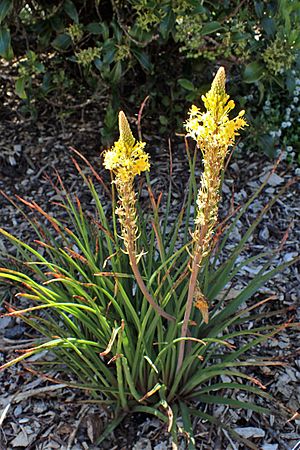Metacrias strategica facts for kids
Quick facts for kids Metacrias strategica |
|
|---|---|
 |
|
| Female | |
 |
|
| Male | |
| Scientific classification | |
| Synonyms | |
|
Metacrias strategica is a special type of moth found only in New Zealand. It belongs to the Erebidae family. You can find this moth in the southern part of New Zealand's South Island.
One cool thing about this moth is how different the males and females are. The female moth cannot fly. She is usually a pale brown, grey, or yellowish-brown color. The male moth, however, is brightly colored and flies around during the day!
Contents
Discovering the Moth
This moth was first described in 1889 by a scientist named George Hudson. He used moths that were collected by William Walter Smith. Smith found the first moth specimen in February near the top of the Richardson Range in South Canterbury.
Hudson first named the moth Arctia strategica. Later, in 1890, another scientist named Edward Meyrick moved the species to the Metacrias group. So, its name became Metacrias strategica. George Hudson wrote about and drew this moth in his books in 1898 and 1928. The very first moth specimen collected is now kept at the Museum of New Zealand Te Papa Tongarewa.
What They Look Like
Adult male Metacrias strategica moths are very colorful. They are active during the day. The females are much plainer, usually pale brown, grey, or yellowish-brown. They do not fly.
George Hudson described the male moth in detail. He said the male's wings spread about 4.3 centimeters (1.7 inches). Their antennae are dull yellow with black marks. The head is black with some yellowish scales. Their legs are yellowish with black stripes.
The main body part (thorax) is black. It has a yellowish collar and wide yellow stripes on each side. The front wings are mostly black with six yellowish lines. The back wings are yellowish-orange with a wide black band near the edge. The very edge of the back wings is a bright red color. The male's body (abdomen) is black with long yellowish hairs.
Where They Live
Metacrias strategica is found only in New Zealand. It lives in the southern part of the South Island. These moths have been seen in places like Otatara and Waituna. In these areas, they live in patches of silver tussock grass near the coast. Other places where they have been found include Brydone, Cannibal Bay, Waipapa Point, and Sandy Point.
Life Cycle and Habits
The young moths, called larvae (or caterpillars), eat many different types of grasses and plants. They are hairy and can be different colors, from straw yellow to deep brown.
The larvae and pupae (the stage before becoming an adult moth) often spend the winter months inactive. Adult moths only live for a short time, about 21 days, during the summer. Young larvae eat when the weather is warm. The older larvae are inactive during the cold winter months. They wait until spring when it gets warmer to become active again.
Sometimes, pupae also spend the winter in their cocoons. The cocoons are usually attached to wood. They are rarely found under stones, unless there is no other cover.
Even though female moths cannot fly, some have been seen to leave their cocoons and move a short distance. However, most of the moth population spreads out when the larvae move around.
Habitat and Host Plants
This moth species lives in coastal areas and at the edges of forests. They can be found up into the mountains. The larvae have been seen eating many different plants. These include European grasses, clover, and plants from the Acaena and Crepis groups. They also eat dandelions, plantain, and a special New Zealand plant called Bulbinella hookeri. Other plants they eat include Gentiana bellidifolia, Senecio bellidioides, and Muehlenbeckia complexia.
Images for kids




